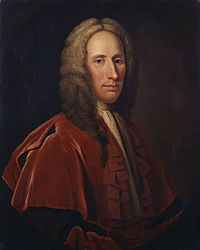Malt tax riots
The fiercest protests, the Shawfield riots, were in Glasgow, but significant disturbances occurred in Edinburgh, Stirling, Dundee, Ayr, Elgin and Paisley.However, the British government was forced to make concessions, and the riots led to the establishment of the Board of Trustees for Manufacturers and Fisheries in 1727.An extension of the Malt Tax to Scotland was proposed in 1713 but abandoned in the face of opposition.Enraged citizens in Glasgow drove out the military and destroyed the home of Daniel Campbell, their representative in Parliament, who had voted for the tax.Andrew Millar, then a book trade apprentice, helped overthrow attempts by Edinburgh magistrates to control dissemination of opinion during the unrest by printing opposition material in Leith, outside the council of Edinburgh's jurisdiction.
Duncan Forbes, Lord CullodenLord AdvocateGeorge Wademalt taxHamiltonGlasgowEdinburghStirlingDundeePaisleyRobert DundasGeneral WadetransportedBoard of Trustees for Manufacturers and Fisheriesunion with ScotlandTreaty of UnionScottish taxation systemGeorge DrummondDaniel CampbellAndrew MillarRobert WodrowPorteous RiotsArchitectureDemographyEducationIdentityLanguageLiteratureReligionUnion with EnglandJacobite risingsMarrow ControversyAgricultural RevolutionHighland ClearancesLowland ClearancesIndustrial RevolutionEvangelical revivalEnlightenmentRomanticismSociety of the United ScotsmenHistory of the United KingdomGeorgian eraKingdom of Great Britain